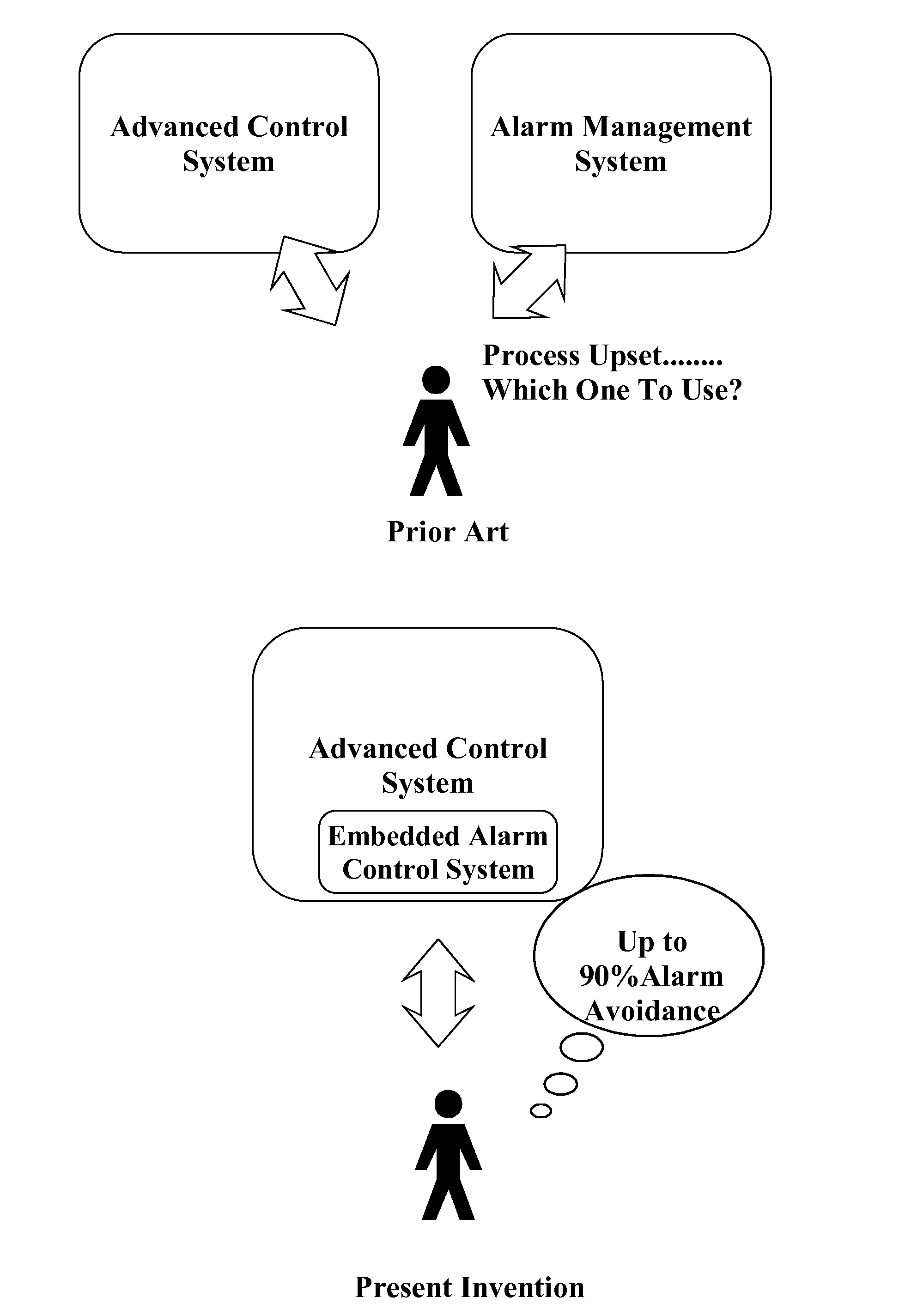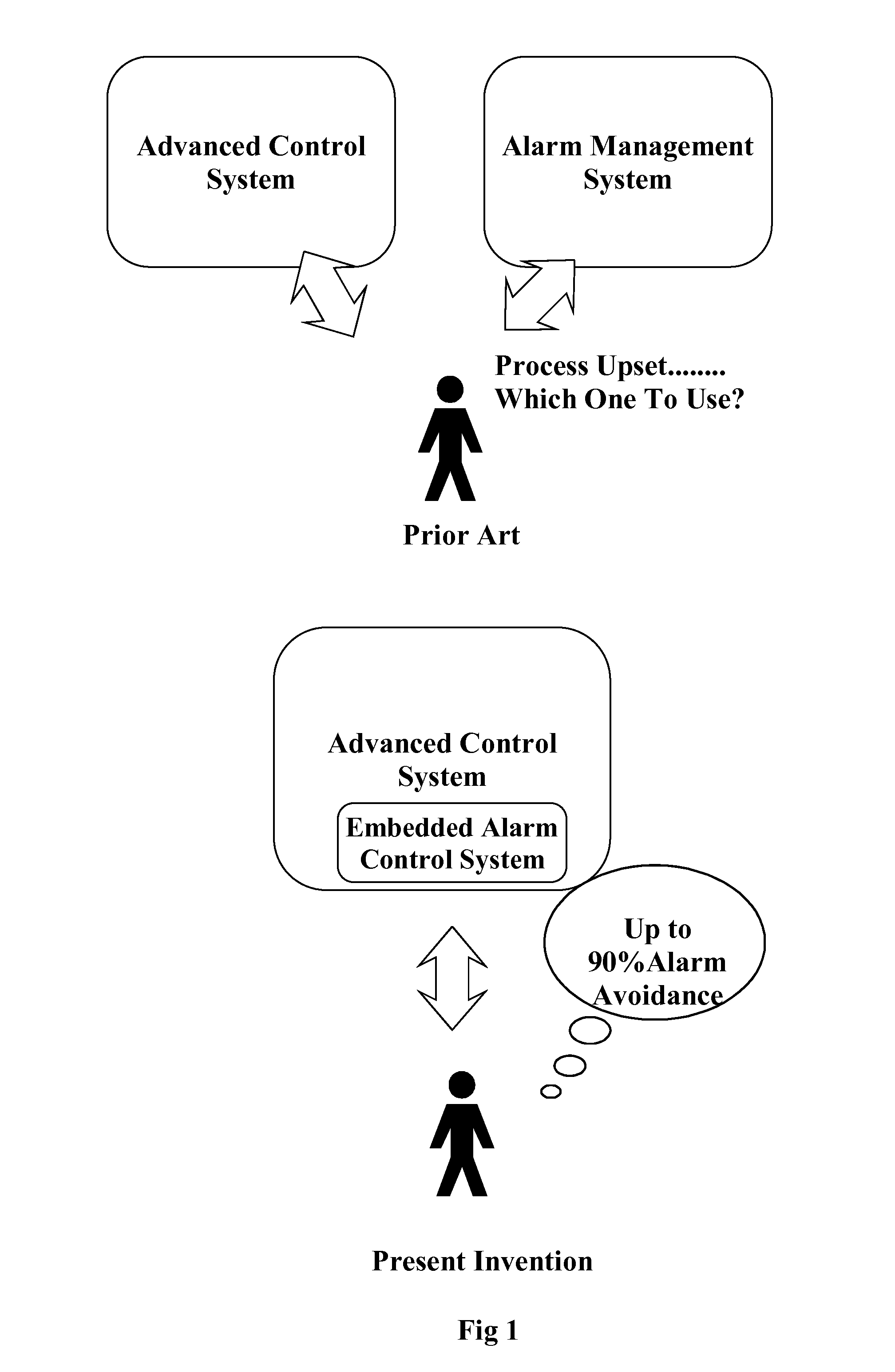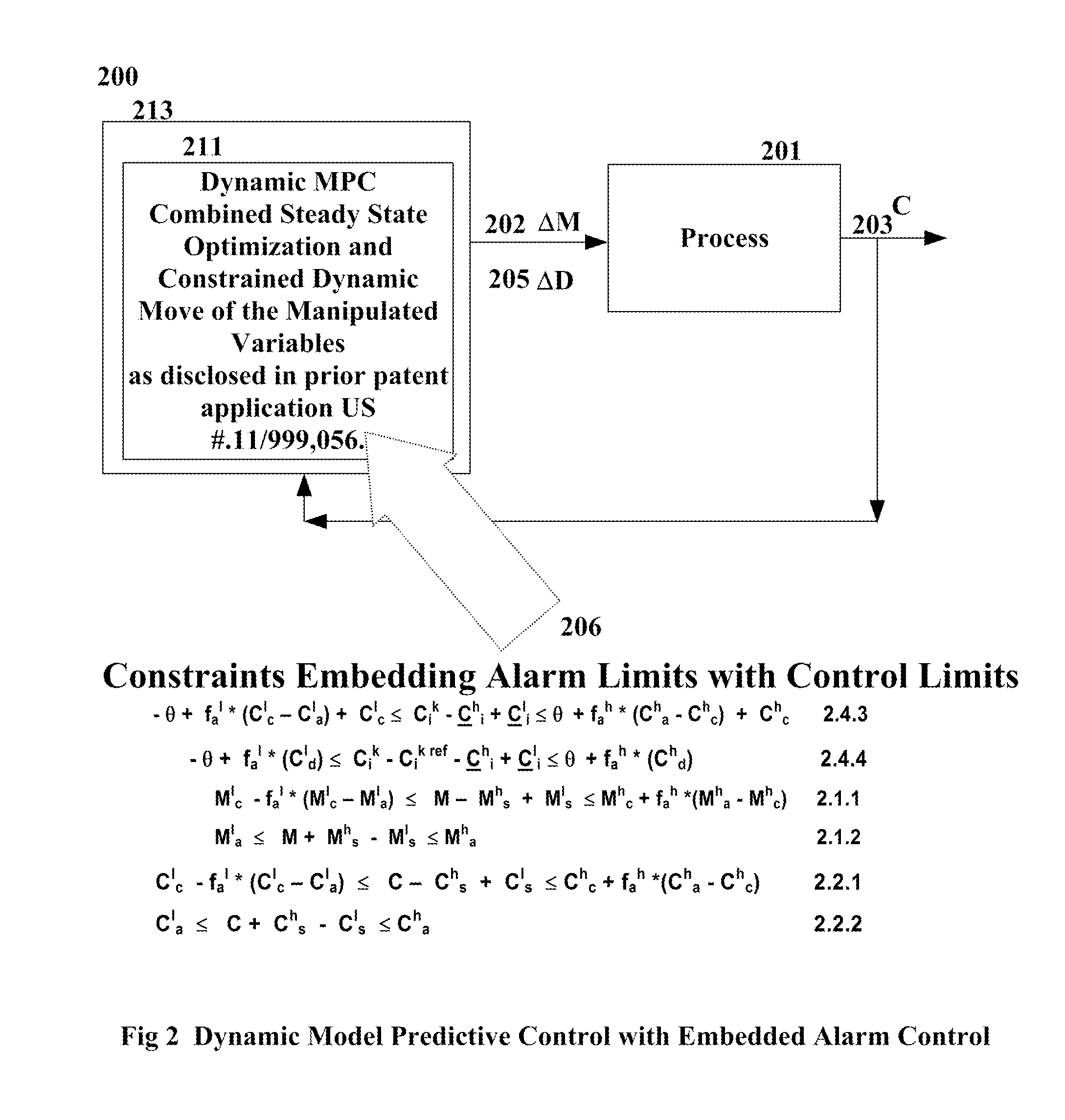Embedded dynamic alarm control system
- Summary
- Abstract
- Description
- Claims
- Application Information
AI Technical Summary
Benefits of technology
Problems solved by technology
Method used
Image
Examples
case 2
[0189] In this case, the MPC incorporates an improved controller design. This case illustrates how number of alarms can be reduced considerably with a better-designed and tuned controller (see FIG. 6.2).
case 3
[0190] In this case, the alarm limits are embedded within an EDACS in accordance in accordance with the present invention (see FIG. 6.3).
case 4
[0191] In this case, an improvement on Case 3 when the alarm limits are tuned to remove what can be considered as nuisance alarms relating to the deviations of two regulatory controlled variables namely, U8TIC—03PV, U8PCI—01PV (see FIG. 6.4).
[0192]It is clear from the comparison of the above four cases that Case 1 presents the most number of alarms in what may be considered as too many alarms, in excess of 470, clearly not a desirable case at all. Case 2 demonstrates that alarm violation pattern can be improved with better-designed MPC. Case 3 shows almost 50 percent reductions from Case 1 simply from a better-designed controller. Case 4 shows a further reduction from case 3 of 90 percent. It shows how the embedding of alarm limits as proposed as per the present invention. Case 4 shows a further reduction over case 3 of almost 99 percent. This shows how the deviations alarm can be filtered out without loss of control. In fact Case 4 can be characterized as being “alarm-free” operati...
PUM
 Login to View More
Login to View More Abstract
Description
Claims
Application Information
 Login to View More
Login to View More - R&D
- Intellectual Property
- Life Sciences
- Materials
- Tech Scout
- Unparalleled Data Quality
- Higher Quality Content
- 60% Fewer Hallucinations
Browse by: Latest US Patents, China's latest patents, Technical Efficacy Thesaurus, Application Domain, Technology Topic, Popular Technical Reports.
© 2025 PatSnap. All rights reserved.Legal|Privacy policy|Modern Slavery Act Transparency Statement|Sitemap|About US| Contact US: help@patsnap.com



